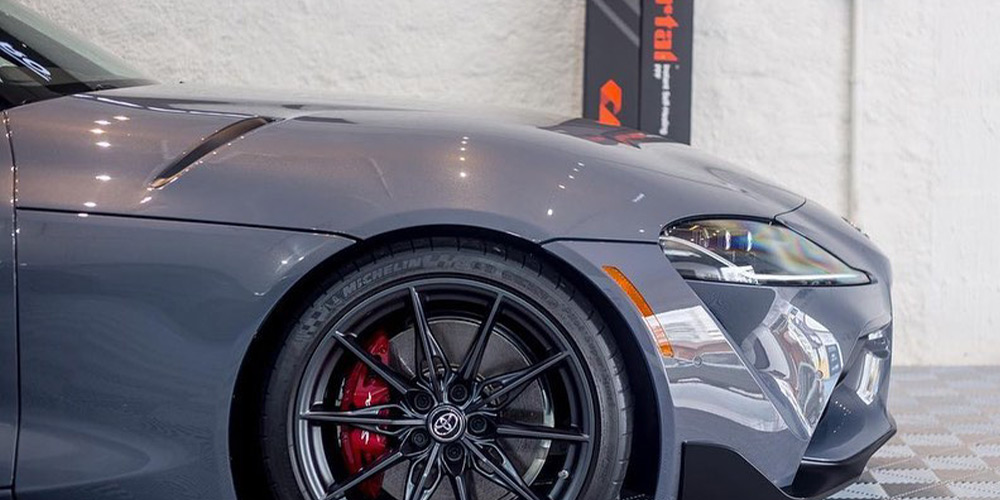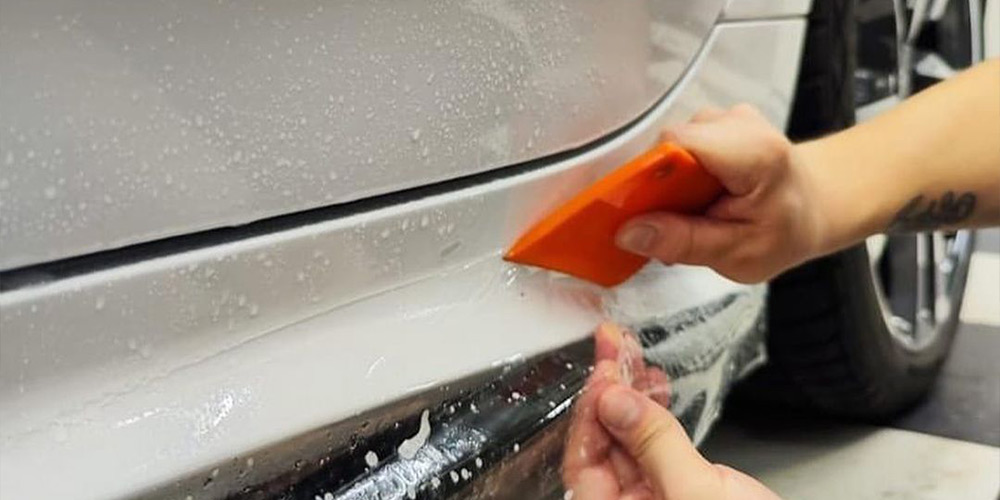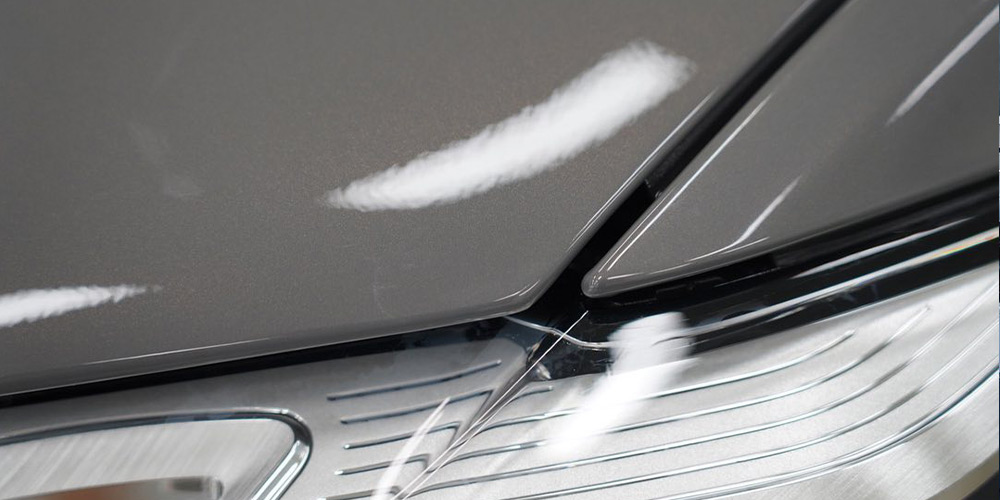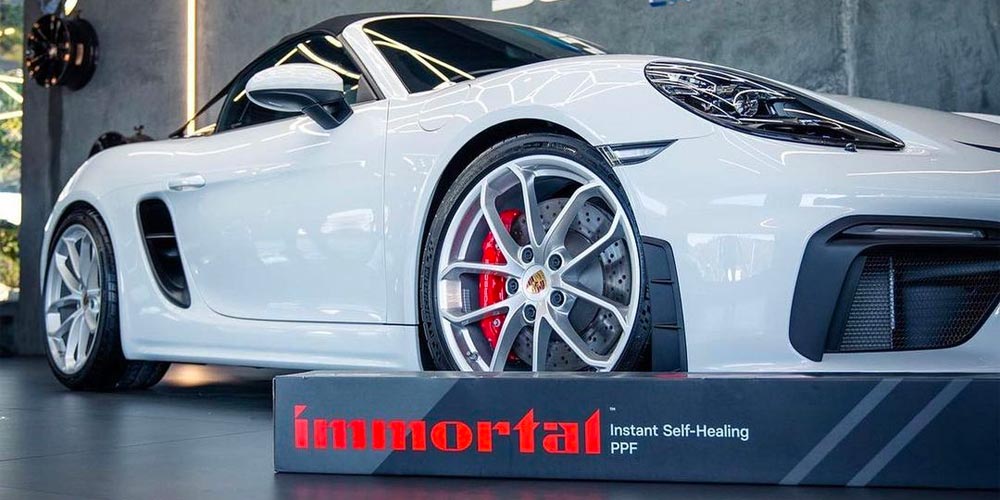Paint Protection Film Disadvantages: The Truth Revealed
Paint Protection Film (PPF) is a popular solution for car owners who want to protect their vehicles from scratches, chips, and other cosmetic damage. PPF is a transparent, thermoplastic urethane film applied to the paintwork. While PPF has many advantages, it also has its disadvantages.

Key Takeaways Of The Disadvantages of Paint Protection Film
One of the main disadvantages of PPF is the cost. Applying PPF to a car is expensive, especially if it is done professionally. The price can vary based on the car’s size and film quality, but it can easily cost thousands of dollars.
Another disadvantage of PPF is that it can be challenging to install. While some car owners may attempt to install the film themselves, it is generally recommended that a professional do the job. Improper installation can result in air bubbles, wrinkles, large seams or edges, and other imperfections that can make your car look worst than if it had a scratch!
PPF can also reduce the gloss of a car’s paint. While the film is designed to be transparent, lower-quality films can still dull the paint. This may only be noticeable to some, but it is something to keep in mind.
Over time, poor-quality PPF can also discolor or yellow. This is especially true if the film is exposed to sunlight for extended periods. While this does not happen to premium films like Immortal PPF, it is something to remember when deciding which film to install.
It can also make the car more difficult to clean. Dirt and debris can get trapped in the edges of the film, making it harder to remove. Additionally, some car washes and detailing products may not be safe to use on PPF, which can limit the washing options for car owners.
Finally, if PPF tears or is damaged in any way, it will need to be replaced. This can be costly and time-consuming, especially if the damage is extensive.
Overall, while PPF can be an effective way to protect a car’s paint, some disadvantages exist. We’ll dive into each disadvantage’s details to help you make an informed buying decision.
Most Expensive Paint Protection Solution
When it comes to paint protection solutions, Paint Protection Film (PPF) is considered to be the most expensive. While it offers excellent protection against scratches, rock chips, and other forms of damage, its upfront cost is higher than other alternatives such as ceramic coatings.
The cost of PPF installation varies depending on the vehicle’s size, the film’s quality, and the installer’s expertise. On average, the cost of PPF installation can range from $800 to $5,000 or more. This high upfront cost can make it difficult for some car owners to justify the expense.
However, PPF can provide excellent long-term value despite its high upfront cost. It can help maintain the vehicle’s resale value by protecting the paint from damage and keeping it looking new. This can be especially valuable for those who plan to sell their vehicle in the future.
Issues with Installation and Removal
Regarding Paint Protection Film (PPF), installation and removal can be quite challenging. If not done correctly, it can lead to a host of issues that can affect the appearance and integrity of the film.

One of the biggest challenges with PPF installation is ensuring it is applied correctly. If the film is not applied correctly, it can lead to ripples, wrinkles, and other imperfections that can affect the car’s appearance.
Removing PPF can also be challenging. Over time, low-quality films can become brittle and difficult to remove, especially if it has been exposed to extreme temperatures or sunlight. When removing PPF, it is essential to do so carefully to avoid damaging the underlying paint. If the film is not removed correctly, it can leave behind adhesive residue that can be difficult to remove.
Limitation of Warranties and Lifespan
Paint protection film (PPF) is a great way to protect your car’s paint from scratches, chips, and other types of damage. However, it is crucial to consider the limitations of warranties and lifespan when deciding whether or not to invest in PPF.
Most PPFs come with warranties of 5, 10, or 15 years. This warranty covers the integrity of the film such that it will not yellow or crack over time. Those warranties will not cover improper installations or damages to the film.
PPF Can Have Edges or Seams Which Negatively Impact Your Car’s Appearance
One of the most significant drawbacks of PPF is that it can have edges or seams that negatively impact your car’s appearance.
When PPF is installed, it is often applied in sections, which means visible seams can be present between the sections. These seams can be unsightly and detract from your car’s overall appearance. Additionally, the edges of the PPF can be visible, especially if they are not wrapped around the edges of the car’s body panels.

Another issue with PPF edges is that they can accumulate dirt and grime over time, which can be challenging to clean. This can lead to soil buildup around the PPF’s edges, which can make your car look dirty and unkempt.
Furthermore, PPF edges can be prone to peeling and lifting, especially if they are not installed correctly. This can result in unsightly bubbles and wrinkles in the PPF, which can be challenging to repair.
Self Healing Properties Won’t Heal Large Scratches
The self-healing properties of PPF won’t repair large scratches. Only fine scratches can heal themselves.
When a car is subjected to a large scratch, the PPF may protect the underlying paint from further damage, but it won’t be able to remove the scratch altogether. This is because the self-healing properties of PPF only work on a microscopic level, where the film can absorb and repair small scratches and scuffs.
In addition, it’s worth noting that PPF won’t protect against all types of damage. While it can help prevent scratches and chips from rocks and other debris, it may not be effective against more severe types of damage, such as dents or deep scratches.
Some Film May Reduce The Gloss Of Your Paint
Poor-quality films may reduce the gloss of your car’s paint. This is because PPF is typically much thicker than waxes, sealants, and ceramic coatings and can affect how light reflects off your car’s paint.
While some PPF brands like Immortal PPF have a high gloss finish, not all films are created equal. Cheaper or lower-quality films may not have the same level of clarity and may cause your car’s paint to look dull or hazy.
Poor Quality Film Can Damage The Paint Or Impact Its Appearance
When it comes to paint protection film, quality is everything. Poor-quality films can cause more harm than good to the paint of a vehicle. Low-quality films may be cheaper, but they are often thinner and less durable, which means they are less effective at protecting the paint from scratches, chips, and other types of damage.
Poor-quality films may contain too strong adhesives, which can cause the paint to peel off when the film is removed. They are also prone to yellowing or discoloration over time, which can make the vehicle look older and less attractive.
Once Damaged, It Must Be Replaced
While PPF is designed to protect the car’s paint from scratches, chips, and other damage, it is not indestructible. If the PPF is damaged, it will no longer be able to provide the same level of protection to the car’s paint. In fact, it may even make the damage worse by trapping dirt and debris underneath the film.
Replacing PPF can be a time-consuming and expensive process. It requires removing the damaged film and applying a new one, which can take several hours or even days, depending on the car’s size and the damage’s extent.
How To Choose A Quality PPF Brand
A high-quality paint protection film manufacturer such as CARPRO Immortal PPF will have a robust network of high-end installers that have tested and installed the product and can vouch for its quality, durability, and appearance. It will also innovate and be at the forefront of the industry. Immortal PPF is the only film with instant self-healing technology, unlike other leading films that require heat and hours to heal.

Conclusion
In conclusion, Paint Protection Film (PPF) has both advantages and disadvantages. While it can protect a car’s paint from scratches, chips, and other damage, it can also be expensive, difficult to install, and may discolor over time. Car owners who want to protect their vehicles may need to weigh the pros and cons of PPF before deciding whether it is worth the investment.
It is important to note that while PPF may reduce the need for more work on a car’s paint, it is not a substitute for regular maintenance and cleaning. Car owners should still take care to wash and wax their vehicles regularly to maintain their appearance and prevent damage.
Engineers who design PPF constantly work to improve its performance and reduce its disadvantages. PPF may become more affordable, easier to install, and longer-lasting as technology advances.
Whether PPF is worth it for a particular car owner depends on their individual needs and preferences. Some may find that the benefits outweigh the drawbacks, while others may decide that other forms of protection or regular maintenance are sufficient.

